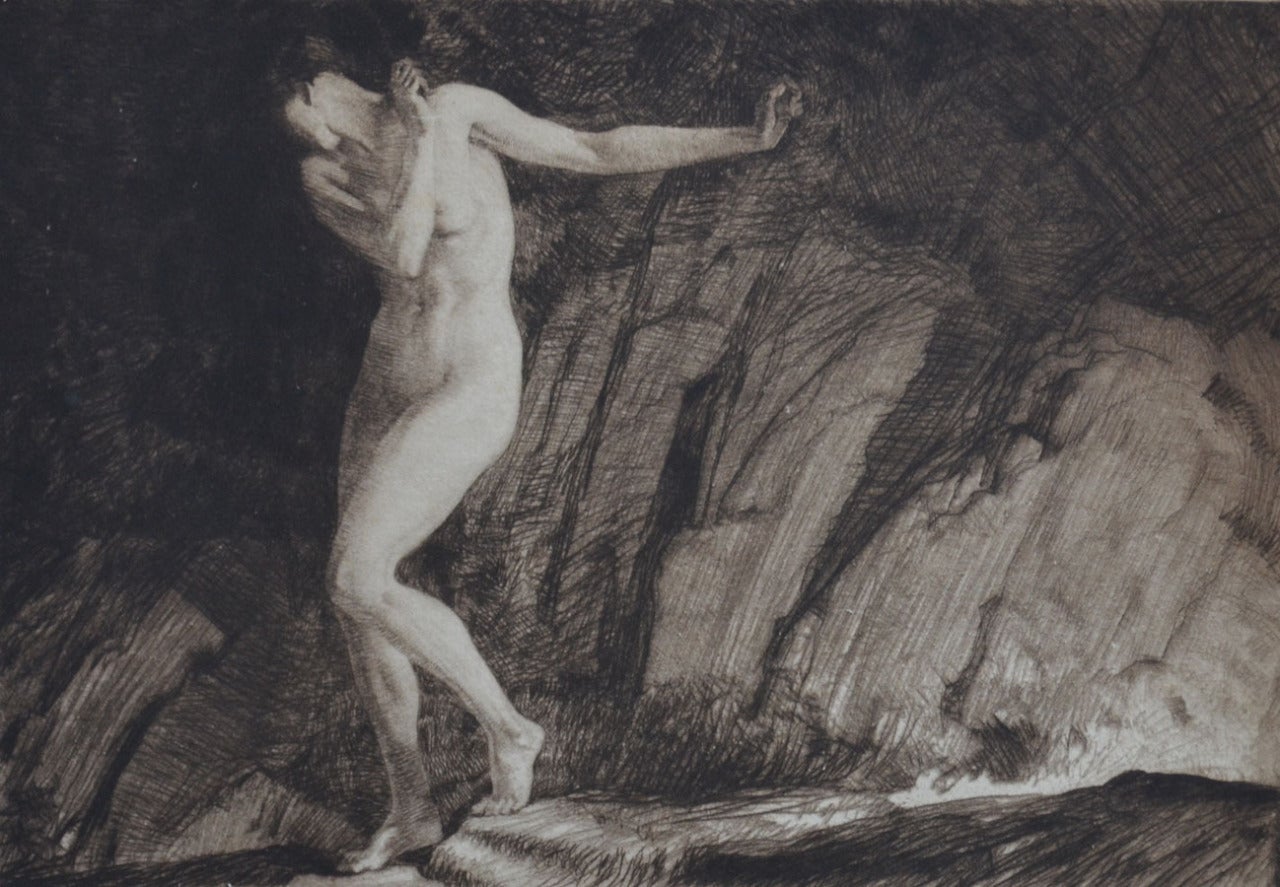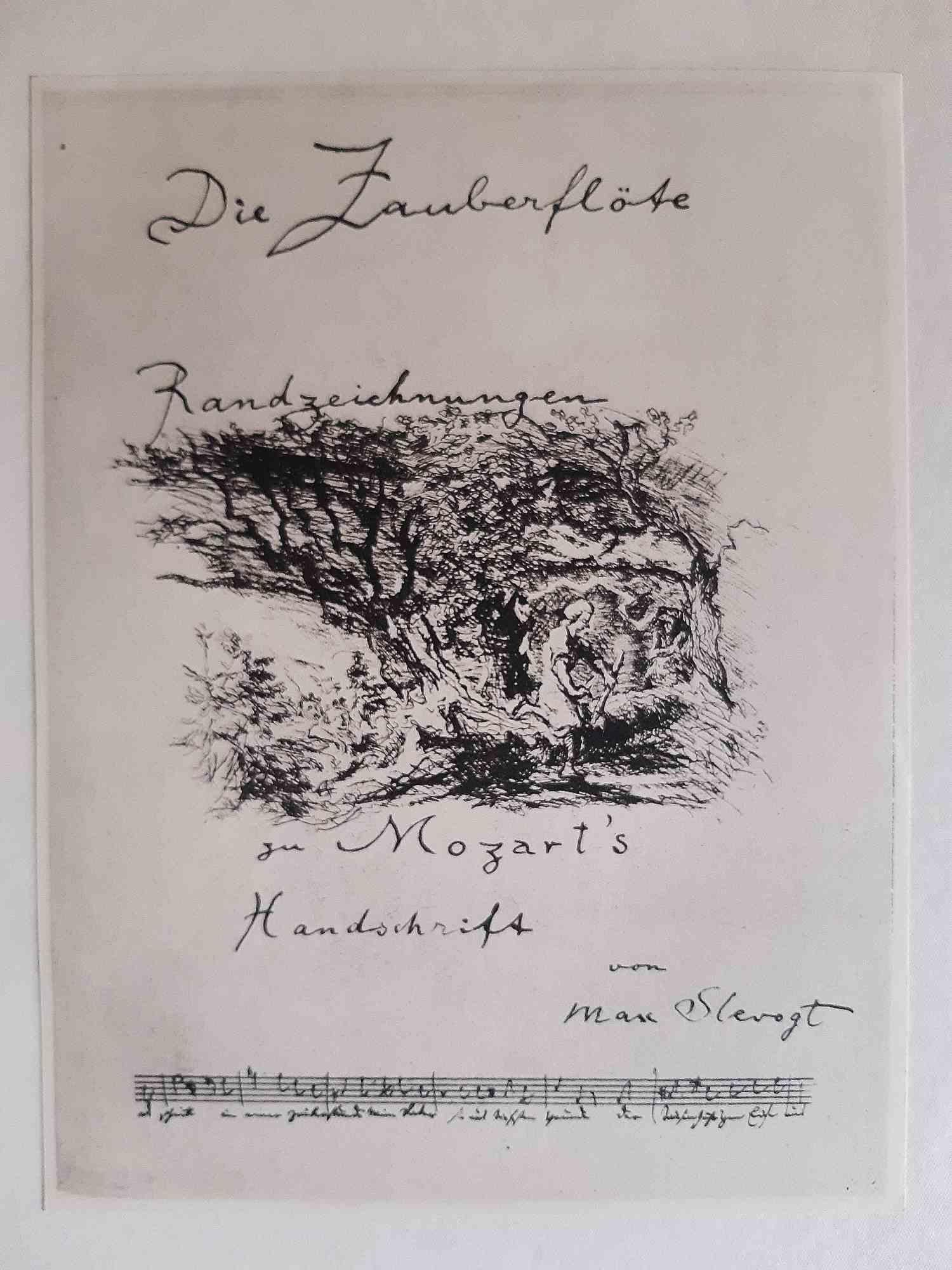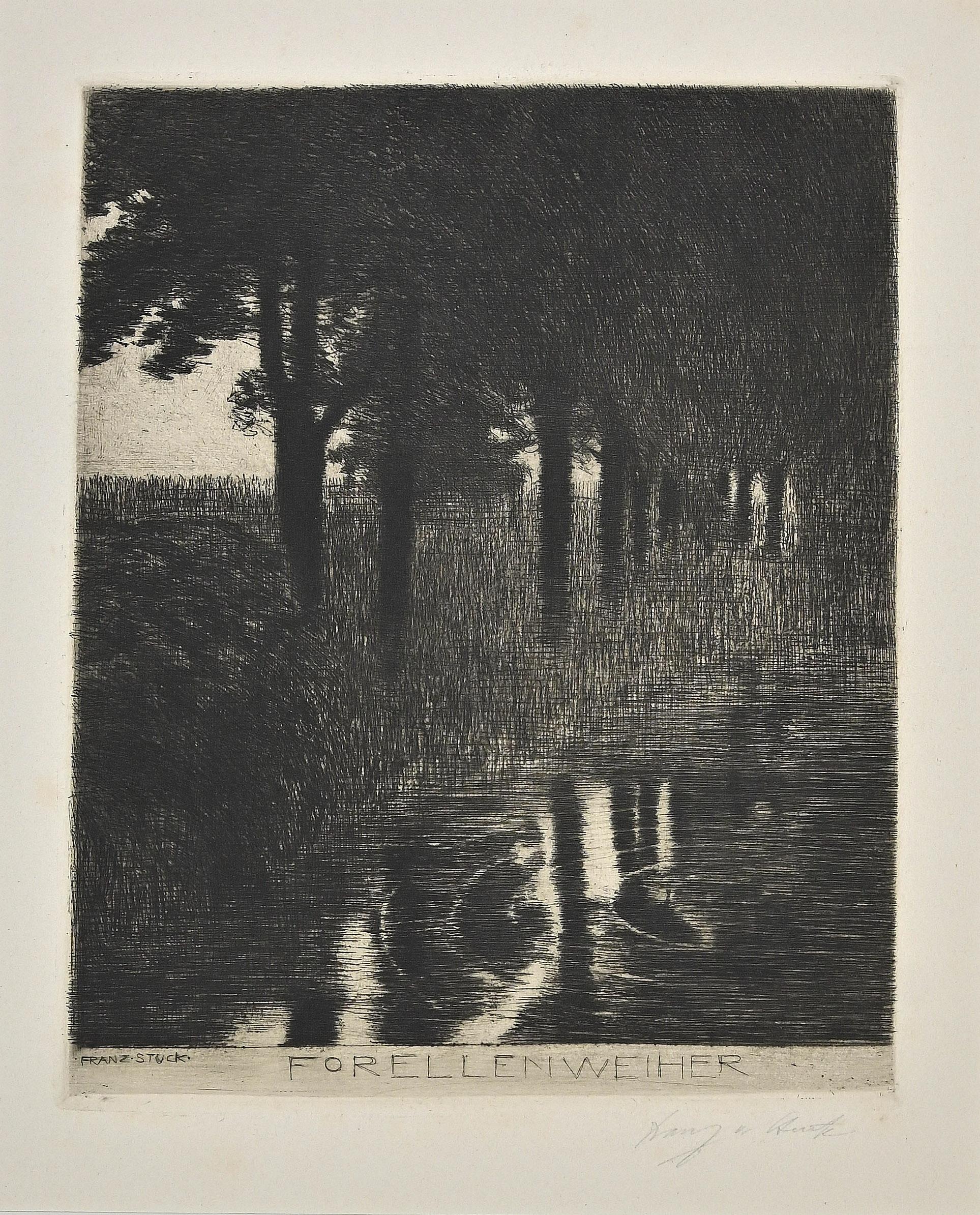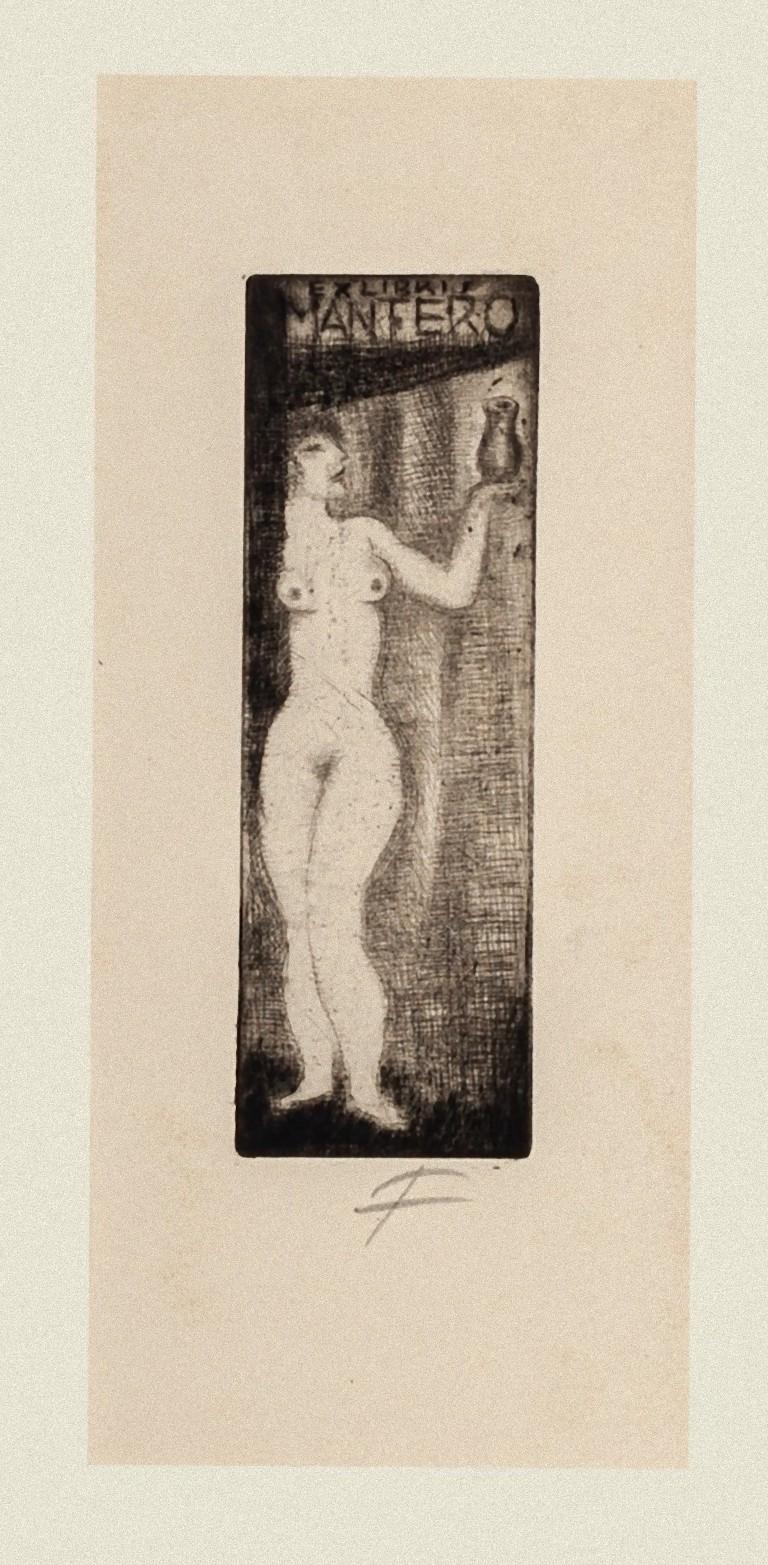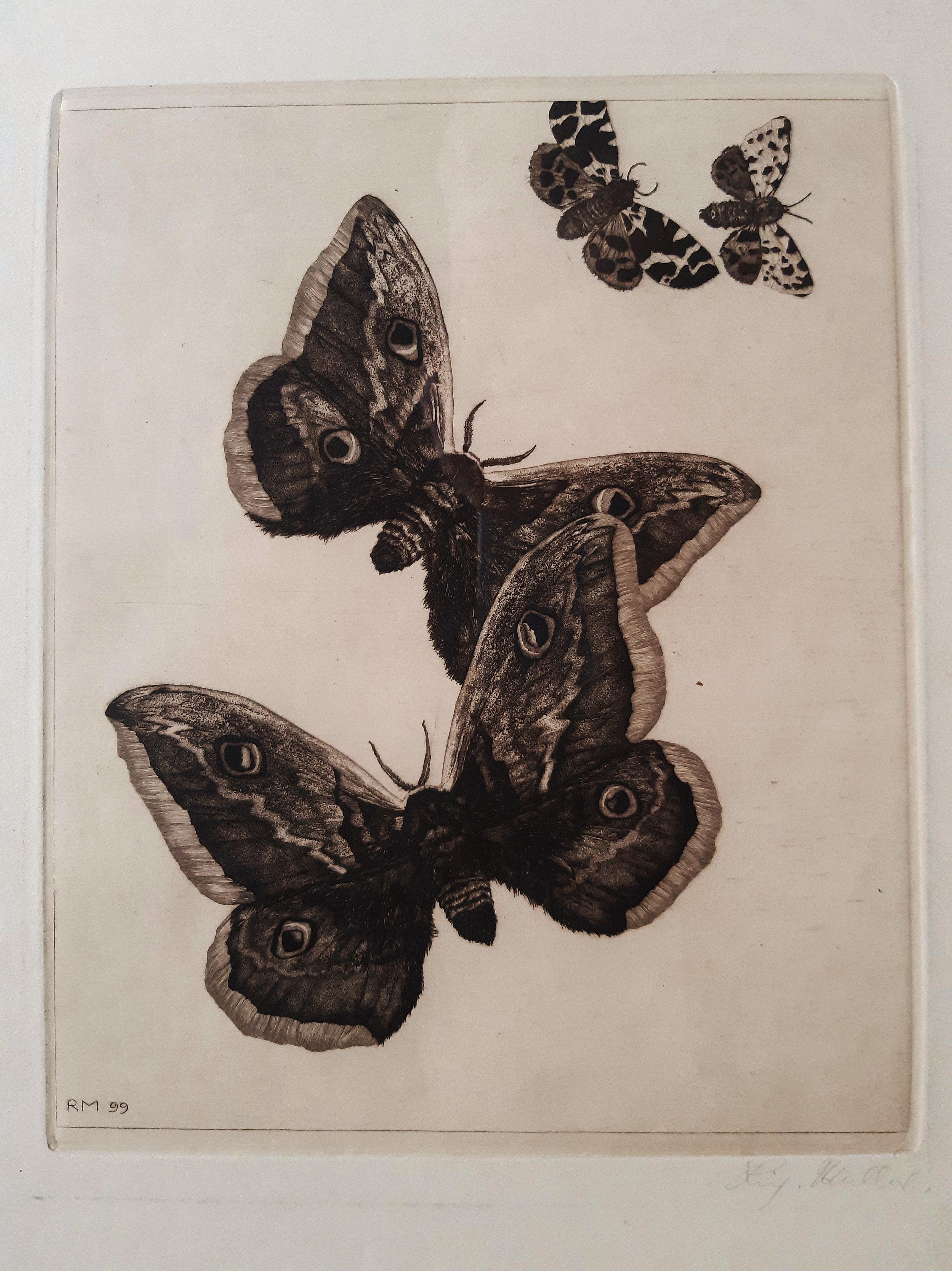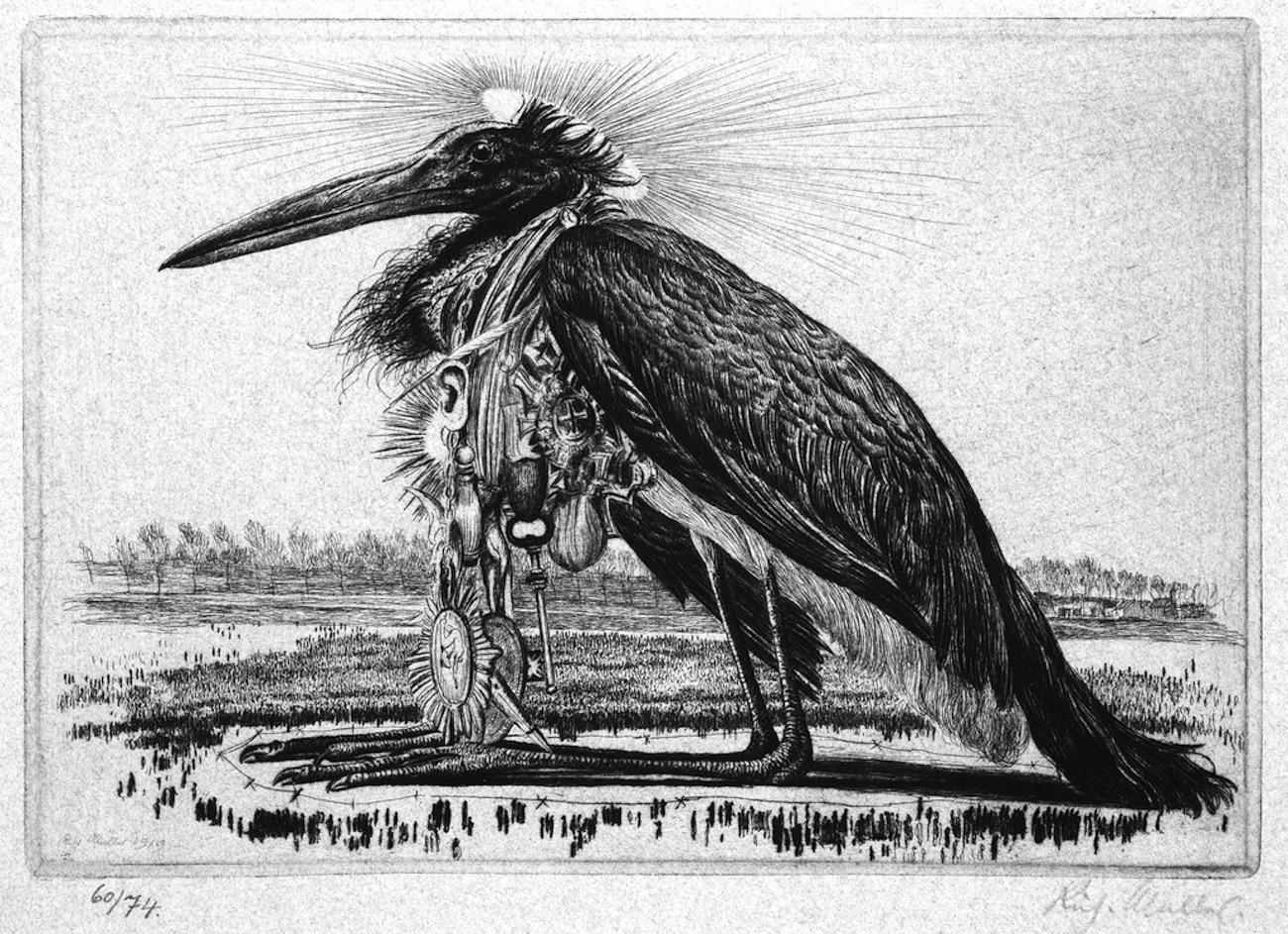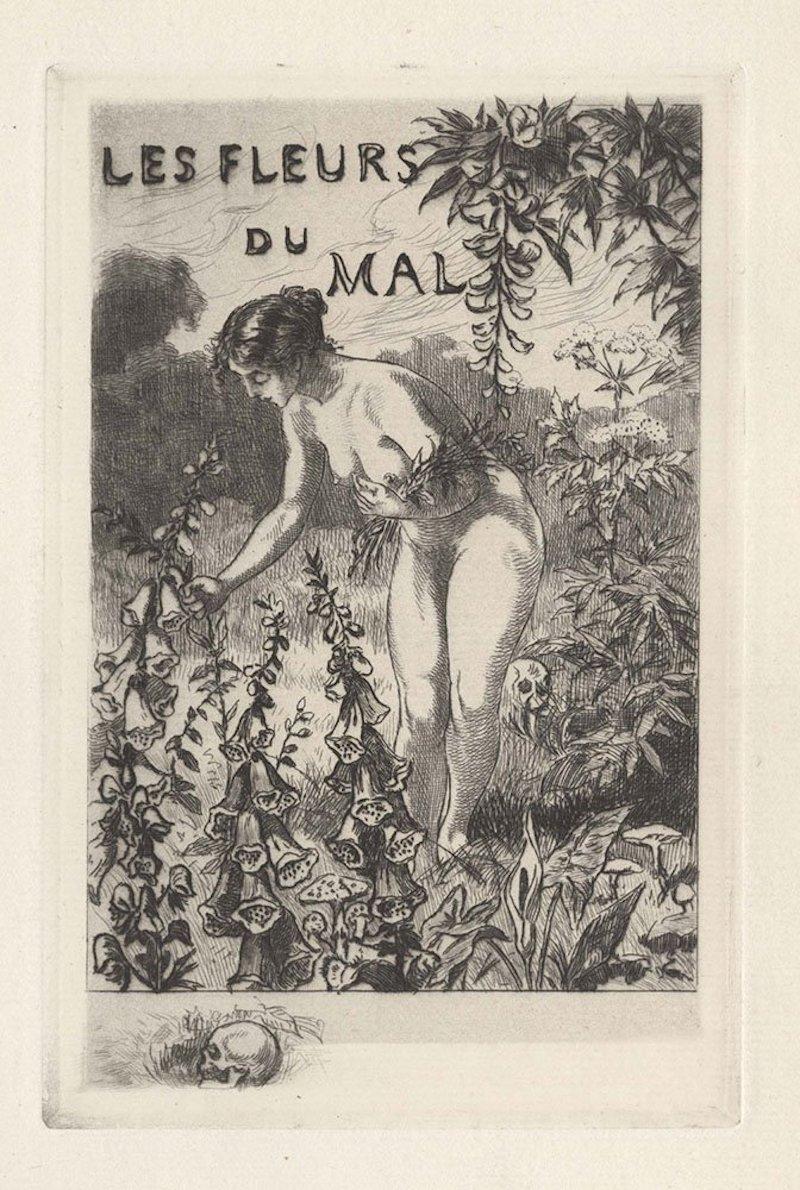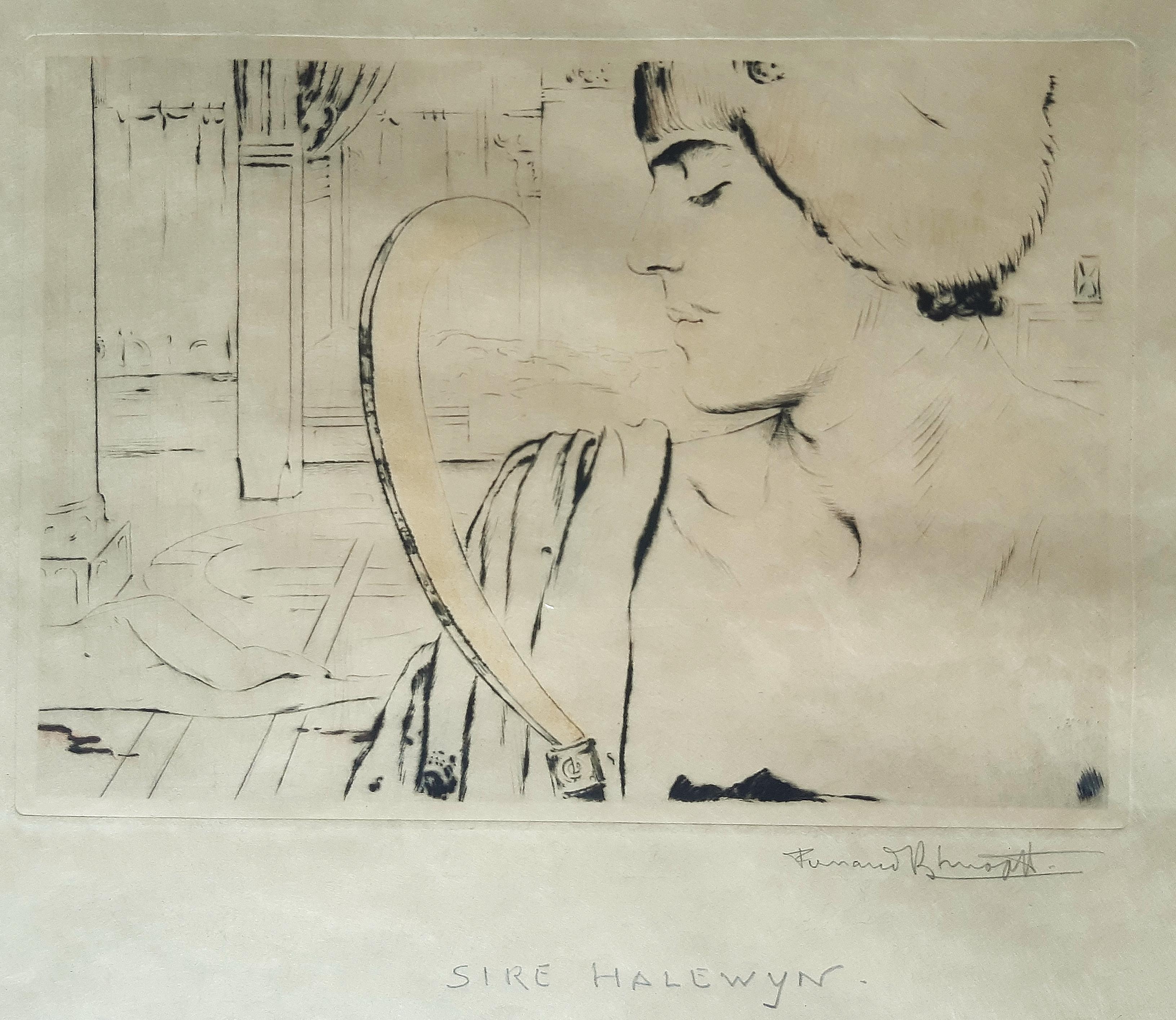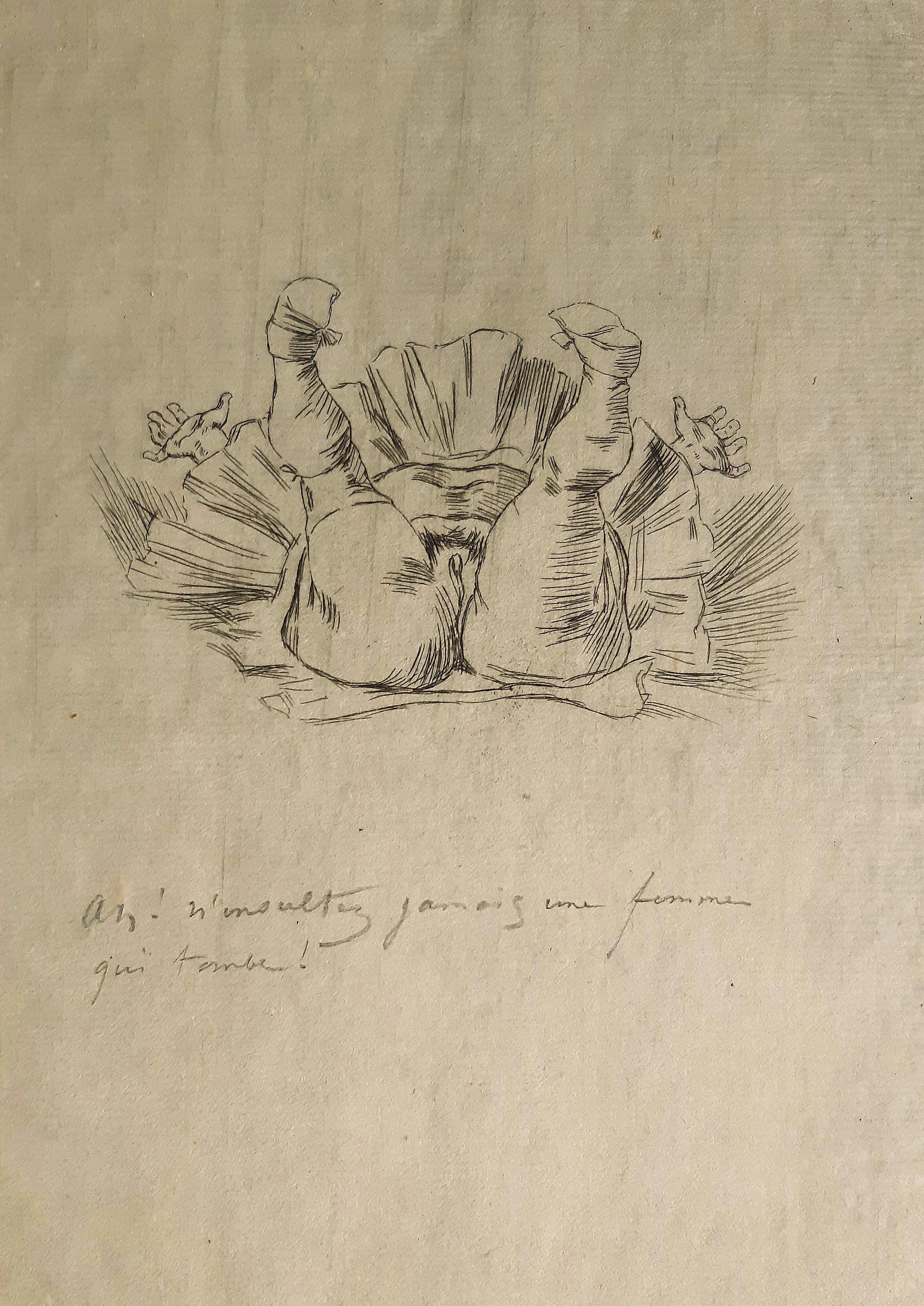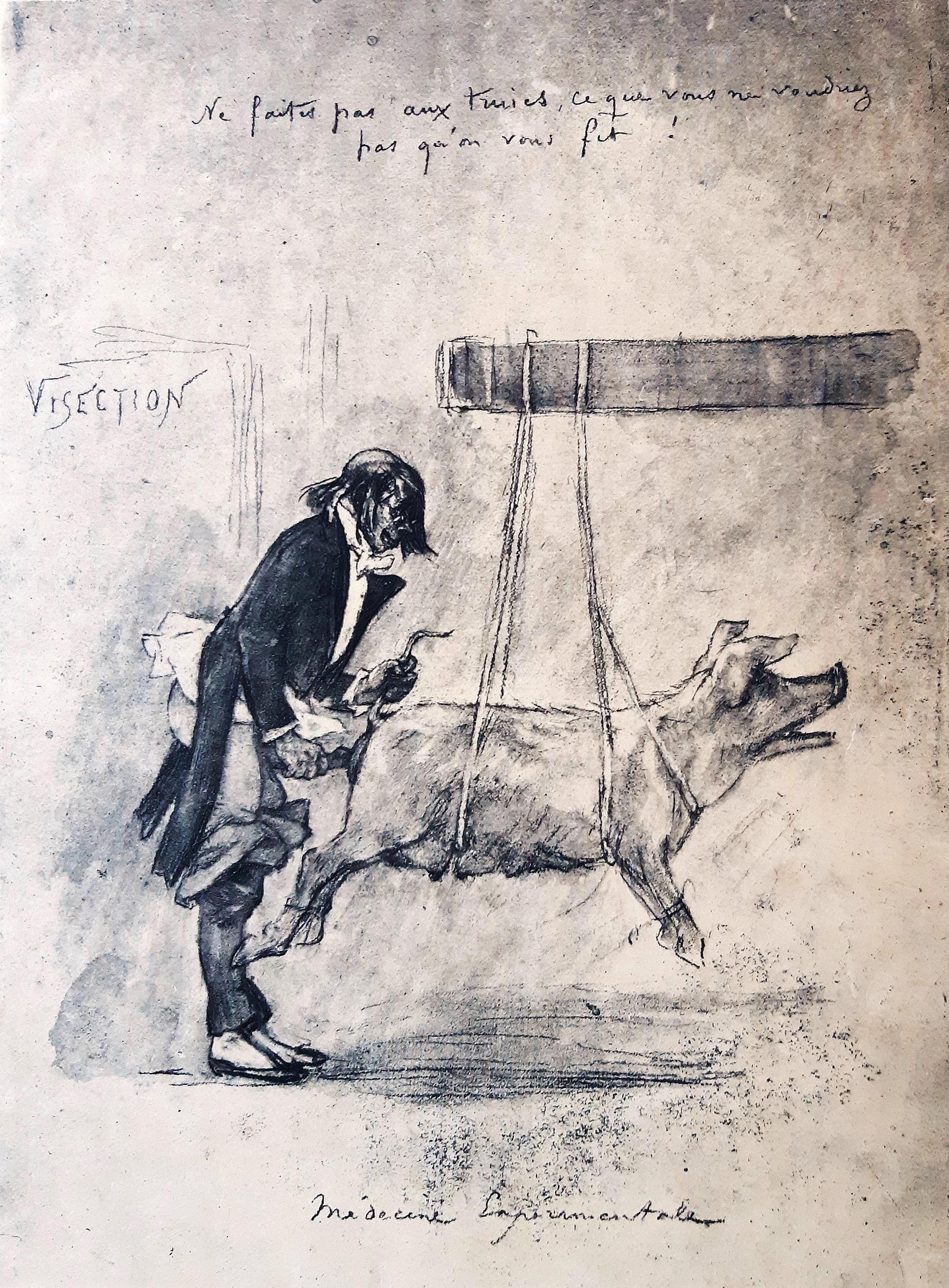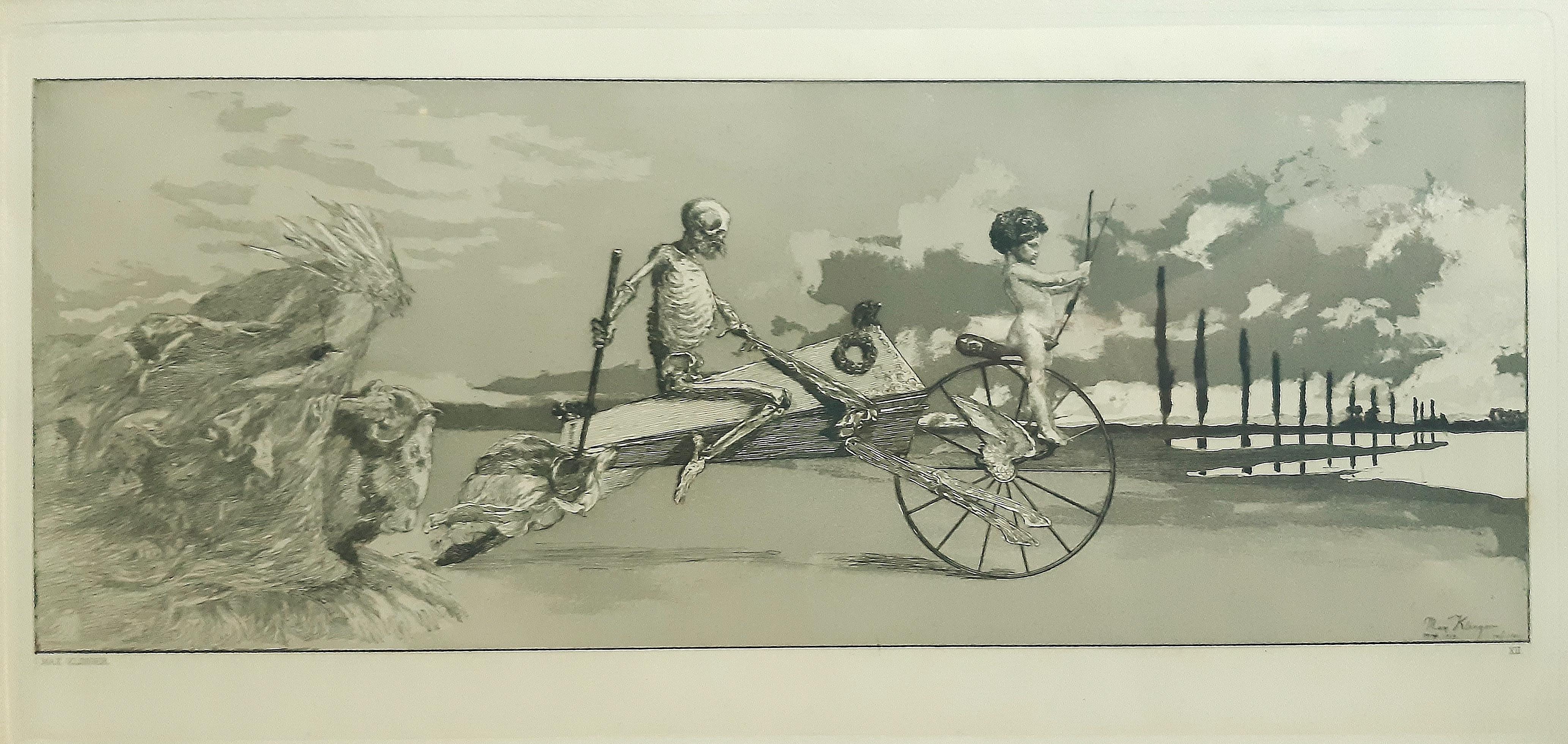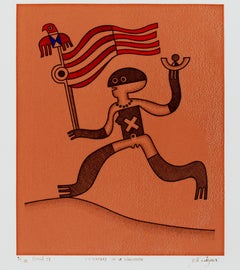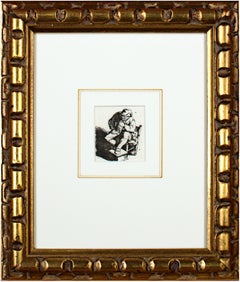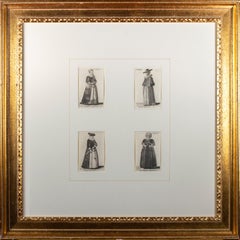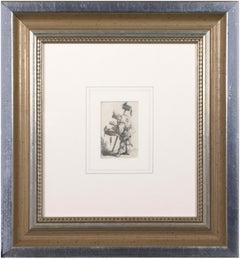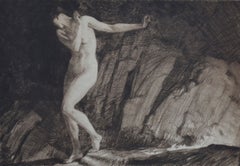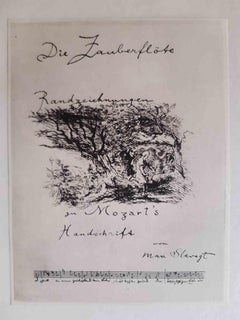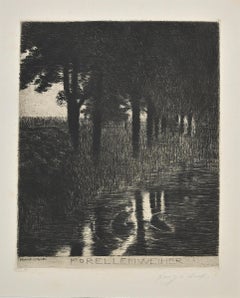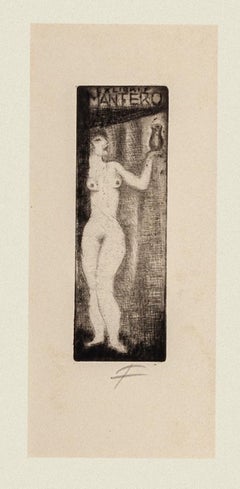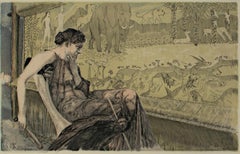
"Penelope, " original color etching by Max Klinger
View Similar Items
Want more images or videos?
Request additional images or videos from the seller
1 of 9
Max Klinger"Penelope, " original color etching by Max Klinger1895
1895
About the Item
- Creator:Max Klinger (1857 - 1920)
- Creation Year:1895
- Dimensions:Height: 15.625 in (39.69 cm)Width: 20 in (50.8 cm)
- Medium:
- Movement & Style:
- Period:
- Condition:
- Gallery Location:Milwaukee, WI
- Reference Number:Seller: 647d1stDibs: LU60533655001
About the Seller
4.9
Gold Seller
Premium sellers maintaining a 4.3+ rating and 24-hour response times
Established in 1966
1stDibs seller since 2017
429 sales on 1stDibs
Typical response time: 2 hours
Authenticity Guarantee
In the unlikely event there’s an issue with an item’s authenticity, contact us within 1 year for a full refund. DetailsMoney-Back Guarantee
If your item is not as described, is damaged in transit, or does not arrive, contact us within 7 days for a full refund. Details24-Hour Cancellation
You have a 24-hour grace period in which to reconsider your purchase, with no questions asked.Vetted Professional Sellers
Our world-class sellers must adhere to strict standards for service and quality, maintaining the integrity of our listings.Price-Match Guarantee
If you find that a seller listed the same item for a lower price elsewhere, we’ll match it.Trusted Global Delivery
Our best-in-class carrier network provides specialized shipping options worldwide, including custom delivery.More From This Seller
View All"L'Etendard de la Vigilance, " Original Etching & Serigraph signed by Joel Cazaux
Located in Milwaukee, WI
"L'Etendard De La Vigilance" is an original etching and serigraph by Joel Cazaux. The artist signed the piece lower right, and wrote the edition number 38/100 in the lower left, and ...
Category
1970s Symbolist Figurative Prints
Materials
Etching, Screen
'The Smoker (Le Fumeur)' original etching by Cornelis-Pietersz Bega
By Cornelis Bega
Located in Milwaukee, WI
'The Smoker (Le Fumeur)' is an original etching by the celebrated Dutch painter and printmaker Cornelis-Pietersz Bega. It presents a genre scene of the type Bega was best known for: Bega's principal subjects were genre representations of taverns, domestic interiors and villages. He depicted nursing mothers, prostitutes, drunks, gamblers and fools such as quack doctors and alchemists. In this case, he shows a man seated on a chair with his foot on a flat stool and holding a smoking pipe. For Bega, this representation was more of a caricature than it was an image of a specific person, and such genre scenes would have held allegorical and symbolic meaning for the seventeenth-century viewer. During the seventeenth century, the Dutch of all levels of society consumed tobacco and alcohol, and these were an important part of the Dutch economy and a major source of wealth. At the same time, however, moralists and ministers sought to curb intoxication: they openly described drinking and smoking as sinful, immoral, and a general threat to one’s reputation. This paradox is reflected in prints such as this, which inherently carry the national pride of the Dutch economy alongside a moral warning in a print that could be just as easily consumed and collected.
2.5 x 2.25 inches, print
12.38 x 10.38 inches, frame
Framed to conservation standards using archival materials including 100 percent rag matting and mounting materials. Housed in a gold finish Spanish-style wood moulding.
Overall good and stable condition; margins cut to plate; some wrinkling in the corners from previous mounting; housed in a new custom frame.
Cornelis Bega was born into prosperous circumstances. His mother, Maria Cornelis, inherited half the estate (gold, silver, paintings, drawings and prints) and all of the red chalk drawings of her father, Cornelis Cornelisz van Haarlem, a renowned Mannerist artist. Bega's father was Pieter Jansz Begijn (d 1648), a gold and silversmith.
Like other family members, Bega was probably Catholic. Houbraken's claim that Bega studied with Adriaen van Ostade is likely to be correct; this was probably before 24 April 1653, when Bega joined Vincent Laurentsz. van der Vinne in Frankfurt for a journey through Germany, Switzerland and France. Bega had returned to Haarlem by 1 September 1654, at which time he joined the Guild of St Luke; he was already a competent draughtsman, as indicated by his first extant dated work, Interior with a Nursing Mother (1652; Frankfurt am Main, Städel. Kstinst.), and by a remarkable double portrait (Amsterdam, Rijksmuseum) drawn by him and Leendert van der Cooghen in 1654.
Bega painted, drew, etched and made counterproofs in a wide variety of materials on different types of small-scale supports. He may have been the first Dutch artist to make monotypes, but this remains controversial. Approximately 160 paintings, 80 drawings and six monotypes by Bega have been catalogued, as well as around 34 etchings.
Bega's principal subjects were genre representations of taverns, domestic interiors and villages. He depicted nursing mothers, prostitutes, drunks, smokers, gamblers and fools such as quack doctors and alchemists. Less common subjects include the ridiculed or pestered woman, as in Two Figures and Mother with a Spirits Bottle (c. 1662; Gouda, Stedel, Museum Catharina Gasthuis) and The Inn (etching), as well as witty satires on traditional scenes of middle-class music-makers, such as the Music Lesson (1663; Paris, Petit Palace).
Bega's early paintings, such as the Weaver's Family (c. 1652; St Petersburg, Hermitage), are freely executed, dark and coarse, recalling the many-figured peasant subjects of van Ostade. Between c. 1660 and 1664 he began to paint genre scenes with fewer figures, which are finely articulated, colourful and psychologically expressive, for example Two Men Singing (1662; Dublin, N.G.). His exquisite, late fijnschilderen ('fine painting') manner, evident in The Alchemist (1663; Malibu, Getty Museum), compares well with that of Gerrit Dou.
As a draughtsman Bega is noted for his single-figure studies, executed mainly in black and white chalk on blue paper or red chalk on white paper. None of the studies, which were drawn naer het leven (from life), seem to relate to a painting or etching. Bega traded drawings or shared models with other artists of the Haarlem school, including van der Cooghen, Gerrit Berckheyde, Dirck Helmbreker and Cornelis Visscher. These artists drew chalk figure studies in a very similar style, characterised by regular and precise parallel shading and well-defined forms; their drawings, especially those of Bega and Berckheyde, have been frequently confused. Unlike the realistic figure studies, Bega's etchings depict interiors with figures or single figures in the manner of van Ostade; the compositions, often with masterful chiaroscuro effects, reflect most closely the paintings of the 1650s.
Bega is likely to have remained in Haarlem, where he paid dues to the Guild in 1661. He probably died from the plague; fees for his expensive funeral at St. Bavo's were paid on 30 August 1664. Among the artists he influenced were Thomas Wijck, Jan Steen, Richard Brakenburg (1650-1702) and Cornelis Dusart. Painters such as R. Oostrzaen ( fl ?1656) and Jacob Toorenvliet...
Category
17th Century Old Masters Figurative Prints
Materials
Paper, Etching
Four original etchings of women from 'Aula Veneris' series by Wenceslaus Hollar
By Wenceslaus Hollar
Located in Milwaukee, WI
Presented here as a group are four original etchings of women in European national dress from the master printmaker Wenceslaus Hollar's series "Aula V...
Category
17th Century Old Masters Figurative Prints
Materials
Etching, Paper
17th century etching black and white figurative character print expressive
By Jan Gillisz van Vliet
Located in Milwaukee, WI
Jan Gillisz van Vliet (1605–1668) was a Dutch Golden Age artist and student of Rembrandt. He worked with Rembrandt between 1628 and 1637, inspired by his master's work. Like Rembrandt, van Vliet made a series of beggar figures, though often with a greater degree of satire and expressiveness. For example, this image of a rat catcher...
Category
1630s Old Masters Figurative Prints
Materials
Etching
18th century triptych etching figurative prints small black and white expressive
By Francois Vivares
Located in Milwaukee, WI
François Vivares was known to have produced several copies of images after older masters, such as, in this case, Rembrandt van Rijn. In this set, Vivares reproduces "The Quacksalver" (1635, Bartsch 129), "Beggar man and beggar woman conversing" (1630, Bartsch 164), and "Beggar Seated Warming...
Category
1760s Old Masters Figurative Prints
Materials
Etching
'Self Portrait 1974' original etching signed by Sandra Sweeney
By Sandra Sweeney
Located in Milwaukee, WI
Following in line with artists before her, like Rembrandt and van Gogh, Sandra Sweeny here presents a self portrait. The image is both direct and subtle not only in its handling of m...
Category
1970s Contemporary Portrait Prints
Materials
Paper, Etching
You May Also Like
Eve
By William Russell Flint
Located in West Hollywood, CA
A magnificent, rare original etching by Scottish artist William Russell Flint.
This etching was just acquired from the estate of an important American artist where it has resided fo...
Category
18th Century and Earlier Symbolist Nude Prints
Materials
Etching
Price Upon Request
Die Zauberflote - Original Rare Book Illustrated by Max Slevogt - 1924
Located in Roma, IT
Die Zauberflote is an original rare book written by Wolfgang Amadeus Mozart and illustrated by Max Slevogt (Landshut, 8 October 1868 – Leinsweiler , 20...
Category
1920s Symbolist More Art
Materials
Paper, Etching
Forellenweiher - Etching and Drypoint by Franz Von Stuck - 1890s
By Franz von Stuck
Located in Roma, IT
Forellenweiher is a wonderful black and white etching and drypoint on wide rod cream paper realized by Franz von Stuck in 1890-1891.
Hand signed in gr...
Category
1890s Symbolist Figurative Prints
Materials
Paper, Drypoint, Etching
Figure - Original Etching by Michel Fingesten - Early 20th Century
By Michel Fingesten
Located in Roma, IT
Figure is an original etching artwork realized by Fingesten.
The state of preservation is good except for a line of folding.
Stamp on the rear "MICHEL FINGESTEN"
The artwork repre...
Category
Early 20th Century Symbolist Figurative Prints
Materials
Etching
Venus in Muschelwagen - Etching by E. Einschlag after M. Klinger - 1907
By Max Klinger
Located in Roma, IT
Venus in Muschelwagen is a superb black and white etching on paper, realized in 1907 by the German artist Eduard Einschlag (Leipzig 1879 -1945), after Max Klinger (Leipzig 1857 - Gro...
Category
Early 1900s Symbolist Figurative Prints
Materials
Etching
Vier Schmetterlinge - Etching by Richard Muller - 1899
By Richard Müller
Located in Roma, IT
Vier Schmetterlinge is an original etching, realized by Richard Müller in 1899, hand-signed in pencil, monogram on the plate, limited edition of 12 prin...
Category
1890s Symbolist Animal Prints
Materials
Etching
